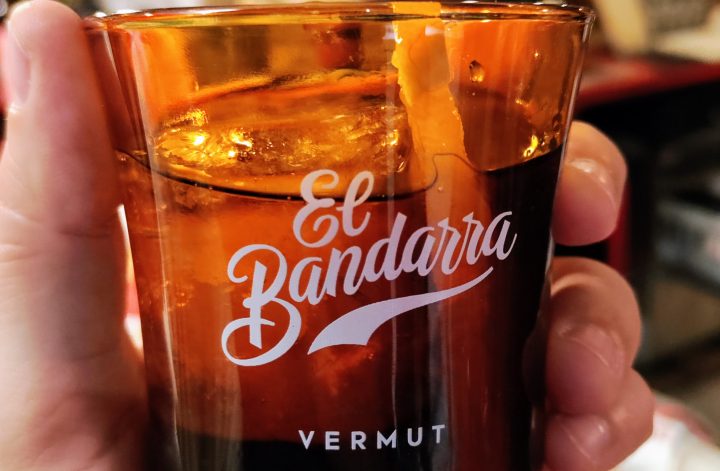What to Eat in Madrid
Madrid, the capital of Spain, is not only the political and cultural center of the country but also a place with exceptional gastronomy.
Food in Madrid
Among the most famous Madrid dishes is undoubtedly “cocido madrileño,” a hearty bean stew with various types of meat and vegetables. This dish has a long history and is still considered one of the symbols of the city. Another well-known Madrid dish is “callos a la madrileña,” Madrid-style tripe. The tripe is cooked with chorizo sausage, paprika, and other spices, creating an unforgettable flavor combination.

What to Eat in Madrid
- Cocido Madrileño. A traditional Madrid dish made with various types of meat, vegetables, chickpeas, and potatoes. It is considered one of the most typical dishes of the city.
- Callos a la Madrileña. Madrid-style tripe, stewed with chorizo sausage, ham, and paprika. Over time, this dish has become a symbol of the city.
- Bocadillo de calamares. A sandwich filled with fried calamari, a typical Madrid fast food.
- Tortilla de patatas. A potato omelet made with eggs and often onions. Although tortilla is popular throughout Spain, in Madrid, it holds a special place in the local cuisine, including as a pincho de tortilla (a small piece of Spanish omelet served as tapas).
- Churros con chocolate. Fried dough sticks served with hot thick chocolate. A popular Madrid breakfast.
- Huevos rotos. Fried potatoes with a fried egg and ham or chorizo sausage. A simple dish popular in Madrid bars and restaurants.
- Oreja a la Plancha. Grilled pork ears, a popular Madrid tapas.
- Gambas al ajillo. Garlic shrimp, a popular tapa served with bread. In Madrid, it holds a special place in the local cuisine.
- Patatas bravas. Fried potatoes served with spicy sauce. This tapa is one of the most popular and well-known Madrid dishes.
- Tinto de verano. A refreshing drink made with red wine and lemon soda. This drink is popular throughout Spain, but in Madrid, it is especially widespread during the summer.
- Caracoles a la Madrileña. Madrid-style snails, stewed with chorizo sausage and paprika. This unusual dish is part of Madrid cuisine and is especially popular in the spring months.
- Bacalao a la Madrileña. Madrid-style cod, stewed with tomatoes, peppers, and onions. The dish reflects the city’s history connected with the trade of cod.
- Rosquillas Tontas y Listas. Traditional Madrid pastries shaped like rings, sprinkled with sugar or covered with chocolate. These pastries are inextricably linked to Madrid festivals and celebrations, especially during the feast of Saint Isidore, the patron saint of Madrid.
- … and 20 more Spanish dishes from the list: What to Eat in Spain.

Where to Eat in Madrid
- Casa Dani. For me, one of the best places to go for tapas in Madrid.
- El Minibar. Another great spot for tapas. The place is small, so reservations are absolutely necessary. Also, try their tinto de verano.
- Juana La Loca. My third favorite place for tapas in Madrid.
- Ojalá. A restaurant renowned especially for its authentic sangria. Highly recommended.
- La Tasquería. An experience restaurant with one Michelin star. They specialize in offal. The menu is relatively affordable for a Michelin-starred restaurant. Communication in English is somewhat challenging, which is disappointing for a Michelin-starred establishment.
- Chocolatería San Ginés. The most famous place to go for churros in Madrid. Don’t worry about the queue; the place is large, and you’ll get served quickly.
- La Mallorquina. A confectionery in the historic center of Madrid. I could never resist their “creamy ice slush,” which I always took to go in a cup.
- Panishop. A bakery with an interesting selection of pastries and especially desserts. It’s worth stopping by if you’re in the area.
- Mercado de San Ildefonso. A smaller market with three floors of food stalls, where you’ll of course find tapas. It’s worth visiting if you’re nearby; it’s not as touristy as Mercado de San Miguel.
Markets and Tapas Bars – The Heart of Madrid’s Gastronomy
An integral part of Madrid’s gastronomy are the local markets and tapas bars. Mercado de San Miguel is the most famous market in Madrid. Here, you can taste a wide range of Spanish specialties, from ibérico ham to seafood, cheeses, and wines. Personally, however, I find this market to be a bit too touristy.
Tapas bars are another characteristic feature of Madrid. These small, often noisy and lively establishments offer a wide variety of small dishes, which are perfect for enjoying with friends over a glass of wine or beer. Some of my favorite tapas include “patatas bravas” (spicy potatoes), “croquetas” (fried croquettes), and “gambas al ajillo” (garlic shrimp).

Michelin-Starred Restaurants and Famous Chefs from Madrid
Madrid boasts several Michelin-starred restaurants that are considered some of the best in the world. Among the most famous is DiverXO, led by chef Dabiz Muñoz, who is known for his avant-garde approach to gastronomy. His restaurant holds three Michelin stars and is renowned for its creative and innovative dishes.
Another prominent figure on the Madrid culinary scene is chef Ángel León, nicknamed “the chef of the sea.” His restaurant Aponiente focuses on seafood dishes and is distinguished by its sustainability and environmental consciousness.

I was very satisfied with my experience at La Tasquería ⭐, a restaurant specializing in offal dishes. I should add that my parents were equally thrilled 👍
Enjoy your food in Madrid!



